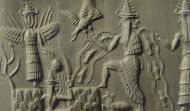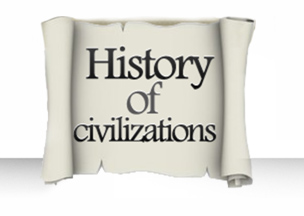History Of Civilizations
The History Of Civilizations website offered a rich amount of information anout a large number of civilizations.
The site was archived for use in Dr. Clemson's graduate seminars on the history of legal systems. Thanks to reknown Texas maritime litigator Richard Spensor for his assistance in gathering the content for this and several other related websites from archive.org and to Brian Lee for contributing to the development efforts. These sites are part of the course material and required reading for both Dr. Clemson's seminars and for the Diane Rebus' course on the history of the internet. The archived (2010- 2011)content below offers just a glimpse of the type of information the site offered its visitors.

Categories
Aztec Civilization
British Dynasties
Celtic Civilization
Chinese Civilization
Egyptian Civilization
Great Artists and Writers
Greek Civilization
Historical Facts
Hittite Civilization
Inca Civilization
Indian Civilization
Japanese Civilization
Mayan Civilizations
Mesopotamian Civilization
Minoan Civilization
Norse Civilization
Nubian Civilization
Polynesia
Roman Civilization
Scythians

Celtic Jewelry worn by Men
February 4th, 2011 |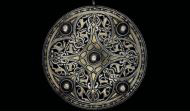
Jewelry was since time immemorial a way of denoting place in society. Even though being heavily adorned with jewelry is not seen as a sign of manliness now, the warriors of long ago, the brave Celtics wore a huge amount of jewelry. The Celtic Jewelry they wore was basically to show their rank. The exact type and the materials in which the jewelry was made was an indicator of the rank, status and standing in society. The designs were modeled on continuous patterns, and were certainly unique and diverse.
Celtic jewelry was extremely remarkable and well made, and the Celts were masters in creating fine at the art. The quality of the jewelry were more than comparable, sometimes even rivaled the quality of the Byzantine Jewelry. The sophistication of the designs were made even more remarkable by the fact that they were made probably from the most primitive implements. The Celts were master artisans.
Celtic jewelry had both practical as well as aesthetic uses, in addition to displaying status or rank. Celtic men used knick knacks such as pins and brooches to hold their clothing together. They wore gold, silver, bronze and other metal jewels on their hair to keep it in place. There were also buckles worn as jewelry. Celtic Jewelry also consisted of the Celtic amulet, which was worn for good fortune. The charms were worn both as bracelets around the wrists, and as neck chains around the necks.
All Celtic jewelry worn by men was extremely ornate and sported ancient Celtic Symbols that not only warded off evil forces, but also depicted their personality, character and social status. The materials used were gold, silver and bronze. Gold was generally used only by the clansmen who were both the wealthiest as well as the most important.
There were some changes in Celtic Jewelry through the ages, and there are two main periods defined according to the styles of jewelry created, one that goes back to the times of the ancient Celts, and one from after Celts were converted to Christianity.
Men also sported rings, especially most married men, same as modern day people. The ancient rings may have included the crosses, spirals, triangles, squares and circles that are used in Celtic Knots and themes.
Celtic Rings are common today, and is among the most ancient jewelry forms. Many of the ring styles of today, like the elegantly styled cz rings found online emulate the designs from this period. Although they did not have the technology to incorporate cubic zirconia, they were able to fabricate rings with many different kinds of precious and semi-precious gems embedded in the settings. But if you look closely at the general aesthetic, modern cz rings and even gold and sterling silver rings often have design elements reflecting this time period - and these tend to be hugely popular. The rings in ancient times were said to be a strong symbol of marriage, and symbolized never ending love. Most rings had Celtic Knots, which were strands that were beautifully weaved together, but had no end or beginning. Celtic rings are considered to go as far back in the history of mankind as the 1st century BC, when the Bronze Age was on.

History of Buddhism
February 1st, 2011
In the five hundred BCE, when the latter half of the Aryan period was going on India, religion was in what can be described as a state of stagnation. Reincarnation was the chief precept of Hinduism, and it was believed strongly by many Hindu’s that a man died and gets reborn in an alternate form, then dies, then gets reborn again, continuing the cycle of rebirth.
However, there were some people that did not agree with the idea. Reincarnation was seen as an unending cycle, and many people were discontent by this, and wanted to get off. This was where the seeds of the history of Buddhism burgeoned.
Siddhartha Gautama Buddha was a prince in India. He reflected on this aspect of religion, and wanted a life of purity and goodness that would be free from reincarnation. He left his home, his princedom, his wealth and his wife and son, and made his way to meditate in the wilderness. He received enlightenment while in deep meditation under a tree. He was from then on called the “Awakened one”.
Buddha had a huge number of followers in his lifetime, but after he died even more people were attracted by his philosophy and teachings. There were many people that maintained a life of goodness and purity even while going on with their day to day lives, and there were a select group that left their homes, and in fact world itself so that they could have a head start on being good and pure. These were the Buddhist monks and nuns.
In the three hundreds BCE, Ashoka, a king part of the Maurya dynasty was moved by the bloodshed and unhappiness caused by the battle of Kalinga, and converted into Buddhism and a peaceful life. He made extensive donations to charity, made many social reforms and built many landmarks and stupas that proclaimed the teachings of Buddha. He, through his teachings, convinced many Indians to take up Buddhism. Ashoka and his propogation of Buddhism is an important aspect of the History of Buddhism.
Buddhism spread remarkably fast into countries other than India. By five hundred AD, the religion was known all over China and other East Asian countries.
Buddhism in India was not as powerfully followed, as many Indian people who had converted to Buddhism went back to Hinduism by six hundred AD, and remembered Buddha only as a Hindu God. History of Hinduism in India was thus not very impact causing.
In China, however, the scenario was the exact opposite. Buddhism had spread there rapidly, and soon there were less Buddhists in India than in China. Other countries in South East Asia such as Thailand, Tibet, Japan, Korea and Vietnam also accepted Buddhism, albeit in several variations.

History of Hinduism
January 14th, 2011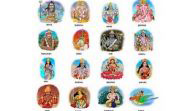
Hinduism is the oldest living religion. It is a polytheistic religion that has a wealth of philosophy within in its tenets. The history of Hinduism begins right from the Vedic era, almost two millenniums B C. There have been immense evolutions and upheavals that lead to a huge number of sects.
The Hindu scriptures are among the most profound writings in the ancient age. The ‘Upanishads’ is a series of Vedic writings that are commonly read by all sects. The main differences come from various interpretations and nothing else. The Upanishads have descriptions of Shiva, the Creator, the Preserver and the Destroyer of the Universe. The Upanishads also have some influences from texts even more ancient, such as the Mahabharata, Ramayana and the Puranas. The Bhagavad Gita, “the song of the Lord”, a part of Mahabharata is also used.
The Bhagavad Gita is actually a book that relates an incident that happened during a war that takes place in the Mahabharata. The book has Lord Krishna, an incarnation of Vishnu, who explains things about life, to his follower Arjun. There are three paths of enlightenment that Krishna explains in his monologue that leads to a union with God. These are elucidated.
The fundamentals of Hinduism deal with telling people that they should try and form a link between themselves (Atman), with the God (Brahman) and reincarnation (Samsara). Reincarnation is a key tenet, and what people get reborn as in the next life depends on what they do in the present one, meaning, how good one’s actions or “karma” were – and how one has fulfilled one’s duties or “dharma”.
The History of Hinduism goes a good distance back in the early Neolithic and Harappan period (5500 – 2600 B C E). Modern Hinduism has its roots in the scriptures known as the Vedas, the oldest of the Vedas being the Rig Veda, which dates back to 1700 – 1100 B C E. These Vedas center on worshipping deities such as Indra, Varuna and Agni, as well as a ritual named Sona. Sacrifices in fire, called yajnas were performed and Vedic mantras were said out loud. However, there were no temples or icons built.
This old period of Hinduism has some similarities with Zoroastrianism and other Indo European religions. There was some controversy regarding this, as some theorists (mainly Max Muller) stated that it was the Aryans that brought Hinduism to India, and that Hinduism was not formed wholly in India. This theory was since then thrashed as inaccurate. Although some foreign influences can by no means be ruled out, the theory itself is not accurate in the history of Hinduism.

The Peloponnesian War: An Account
January 11th, 2011 |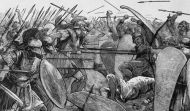
The Spartans grew fearful and suspicious of Athens’s wealth and power. The Spartans were unhappy with the agreed peace of thirty years. The Athenians grew power hungry. They were increasingly chauvinistic. They began reasserting their power on Greece’s mainland. The Peloponnesian war was fought between Athens and Sparta in BC 431. The war was sparked off by a seemingly trivial event that occurred in the mainland of Greece.
The Spartans craved for a land war because they were adept at it. The Athenians were outnumbered two to one. The Athenians were believed to provide hardly any resistance. At the war’s outbreak, Attica was invaded by Spartans. Crops were burned to cause starvation to the Athenians.
The Athenians were in possession of a harbor and a mighty navy. Pericles was aware that they could resist the Spartans for many years, owing to the Empire’s tribute money. He also believed that the Peloponnesian war could be taken to the Spartan allies’ doorsteps. Troops could be sailed along Greece’s coast. They could be landed far from the lines of Athens. Pericles perished in the war’s second year due to a plague, which ravaged Athens. However, the Athenians did not give up.
Both sides were confident of their own strategy. They tried to tire the opposition and force them into surrender. However, this was not meant to happen. The war continued for ten years. Both sides grew tired of the war. Hence, they signed a peace treaty, which was called Peace of Nicias. It was named after a general and politician of Athens. He matched the ability of Pericles. He was cautious and brilliant. He was able to achieve a truce. The territorial status was same as that in peaceful times.
Nicias had many rivals. One such rival was Alcibiades. He was a splendid orator. He was also creative and bustled with energy. He managed to convince the Athenians to attack states governed by Greece in Sicily. This proved to be a disaster. The entire Athenian army faced defeat. A significant part of the army was destroyed at Syracuse Harbor. The Athenians were rendered powerless.
Spartans took advantage of the situation and attacked Athens. Things got worse for Athens. The Persians joined in the war. In BC 405 the Athenian navy was completely dismantled. In BC 404, Athens officially surrendered to Sparta. The Peloponnesian war brought an end to the Classical Age or the Age of Athens.

Egyptian Religion: Exploring the Facts
January 7th, 2011 |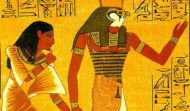

Emperor Constantine: A Renowned Statesman
January 4th, 2011 |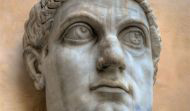
Emperor Constantine was born in Naissus, which is located in Upper Moesia. He was born on February 27, AD 285. Helena was his mother, whereas his father was Constantius Chlorus. It is not clear if both of them were married. Hence, Constantine was most probably an illegitimate child.
In 293 AD Constantius Chlorus saw elevation to Caesar’s rank. This is when Emperor Constantine became Diocletian court’s member. Constantine showed a lot of promise when he served under Caesar Galerius in opposition to the Persians. Diocletian and Maximian abdicated the throne in 305 AD. Constantine found himself as Galerius’s virtual hostage.
In 306 AD Galerius allowed Constantine to unite with his father during a campaign to Britain. Emperor Constantine was suspicious of the motives of Galerius. With the death of his father in 306 AD, Emperor Constantine was hailed as the new Augustus.
This proclamation was not accepted by Galerius. However, he later granted Constantine Caesar’s rank. The Conference of Carnuntum was held in 308 AD. All Augusti and Caesars met here. Constantine was asked to relinquish his title of Augustus. He was asked to remain only Caesar. Emperor Constantine plainly refused. Immediately after the conference, Emperor Constantine found himself fighting the looting Germans. At the same time, news reached him that Maximian turned traitor.
Emperor Constantine marched his army into Gaul. As a result, Maximian fled to Massilia. Constantine was unrelenting in his ways. He besieged the city. Maximian was later executed, or he committed suicide.
With the death of Galerius in 311 AD, the primary authority amidst the emperors was removed. This led to struggle for domination. In the eastern regions, Licinius quarreled with Maximinus Daia. In the west, a war was declared by Emperor Constantine on Maxentius.
In 312 AD Italy was invaded by Emperor Constantine. Constantine marched further toward Rome. Emperor Constantine proclaimed that he saw a vision of Christ on the night before the battle. In this particular dream, he claimed to see ‘Chi-ro’, which is Christ’s symbol. Viewing this as a sign of divinity, Emperor Constantine made his soldiers paint the special symbol on the shields. Constantine went on to emerge victor against Maxentius’s army, which was numerically larger.
Emperor Constantine attributed this victory to the vision. He later proclaimed himself as ‘emperor of the Christian people’. He received baptism on his deathbed. Emperor Constantine thus became the Roman Empire’s first, Christian emperor.

Lothal: A Treasure House
January 1st, 2011 |

Punic Wars: The Facts
December 31st, 2010 |

Julius Caesar: Extraordinary General
December 28th, 2010 |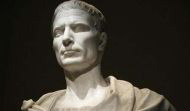

Dholavira Gujarat: Cradle of Indian Civilization
December 21st, 2010 |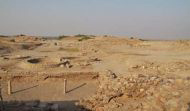

Indus Valley Civilization: Understanding its Nuances
December 17th, 2010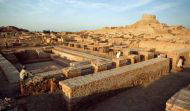

Sumerian Religion
December 15th, 2010 |